As we landed at Berlin airport in the drizzling rain, I asked myself one question: is there anything left of East Berlin?
The answer surprised me: yes, but you have to look for it. I first visited Berlin as a secondary school student more than 30 years ago, of course just on the East side. Only a few memories remained: the Pergamon Museum, the TV Tower and grey blocks of houses. Not long after the reunification of the city I managed to visit it again. At that time I could marvel at the West side as well as the Wall, which worked well as a tourist sight, full of graffiti art. Now in 2017, I gave myself a special theme for sightseeing. I was curious to see if, 27 years after reunification, the differences were still visible between the two parts of the city. Or had they removed all traces of the earlier period?
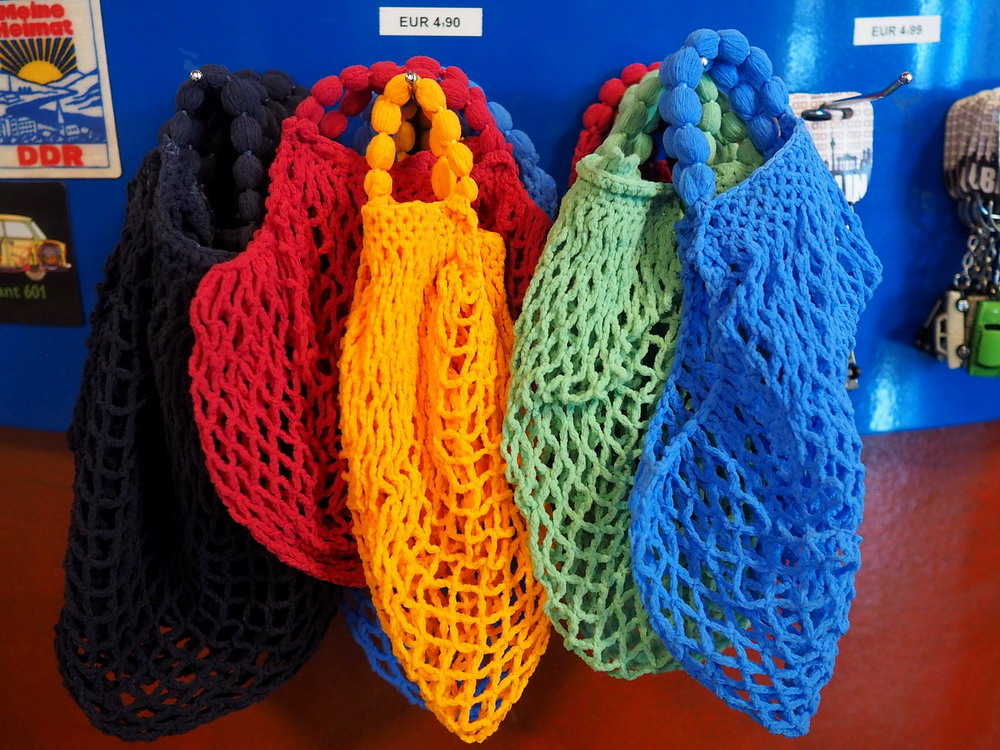
My first question (is there anything left of East Berlin?) was soon answered when I got to the heart of Berlin, called Mitte. This district, which was once part of East Berlin, is now perhaps the most modern section of the whole city. Right next to the buildings that outlived the storms of history, shiny glass palaces have been built, among which elegant department stores and trendy cafés are hiding.
Monuments
Signs of Berlin’s earlier period are not particularly eye-catching, but I was ready to find them. First I visited a statue, which I could hardly believe was still there. The huge Soviet monument, erected in memory of the soldiers who passed away during the liberation of Berlin, stands in the popular Treptower Park – not directly in the centre but within easy reach by public transport. Even during unfriendly weather, there were surprisingly many visitors here, not to mention the joggers quickly passing the gigantic statues. The huge park is very well-maintained, and the numerous bird feeders on the trees are effective: the lively chirping of birds escorted me along my way.

Interestingly enough, only a few minutes’ walk from here stands one of Berlin’s most progressive statues. Jonathan Borofsky’s 30 meters high masterpiece, Molecule Man rises from in the River Spree. I was touched by a certain feeling here: how naturally the past and the future can live together in Berlin. They have left a past memento, which in other countries would have been demolished or exiled to a sculpture park, and next to it erected a modern artwork.
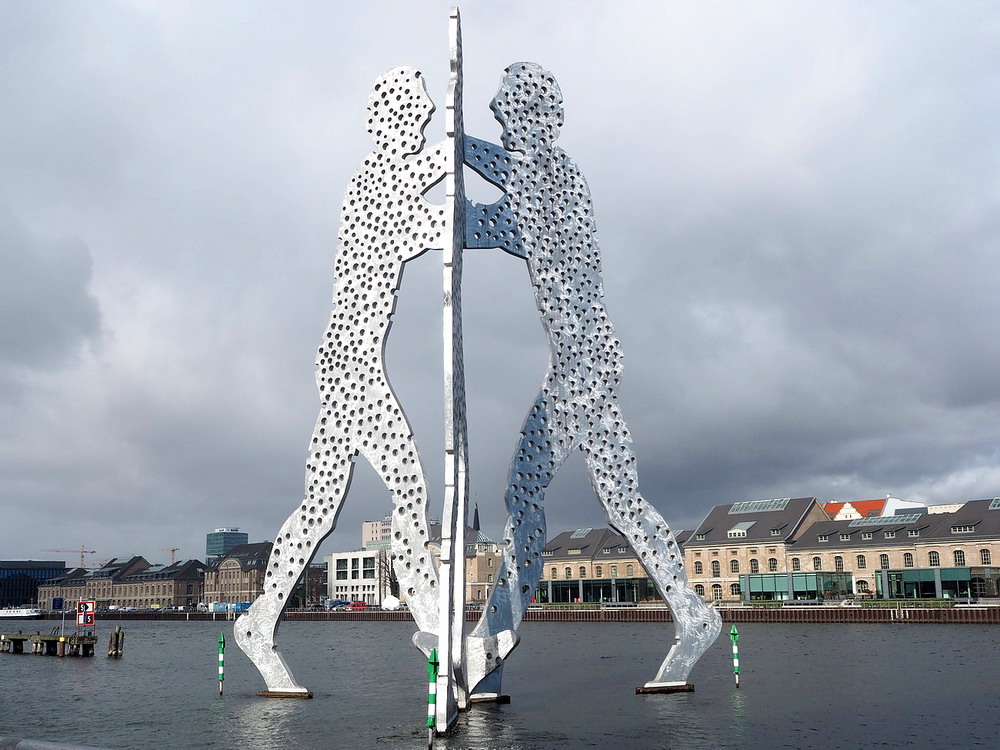
Museums
From here I headed towards the GDR Museum. I read about it years ago, and since then I have been super curious about what kind of objects I would find there. Actually, this curiosity is what gave me the idea to look for GDR memories during my trip. It was not just the wall and the historical aspects that interested me, but to what extent the old days were still present.
Looking at the collection thousands of emotions rushed in. First I smiled when I encountered the objects that had surrounded me as a child in my parents’ house, and which are probably still hiding in the depths of many drawers – from egg slicers to Praktika cameras. To see them all in their original boxes made me think and gave me a strange feeling: has time been flying so fast that the memories of my youth can already fill a museum?
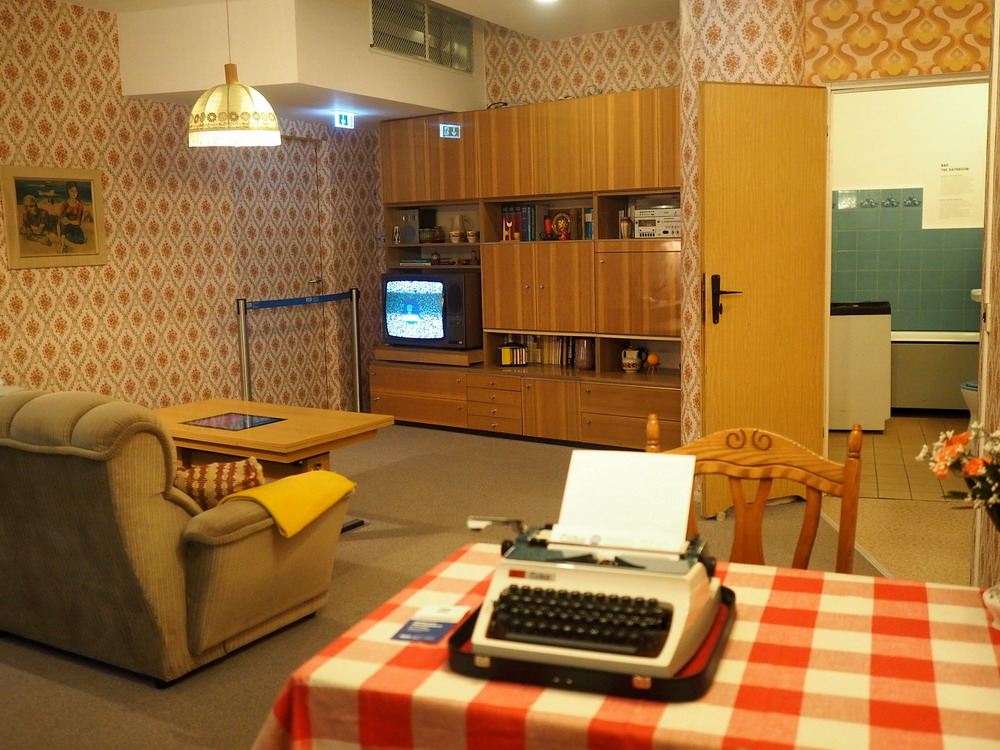
It was also interesting to see old-fashioned objects presented in the most modern and interactive ways. The all-time children’s favourite is undoubtedly the Trabant simulator. With this, visitors can take a virtual tour of Berlin, using the wheel and pedals of an original Trabant and listening to original sound of the engine. In the city – displayed in 3D – all the other cars are Trabants, of course. The kitchen interior is similarly creative, as you can read old recipes when opening the cupboard doors.
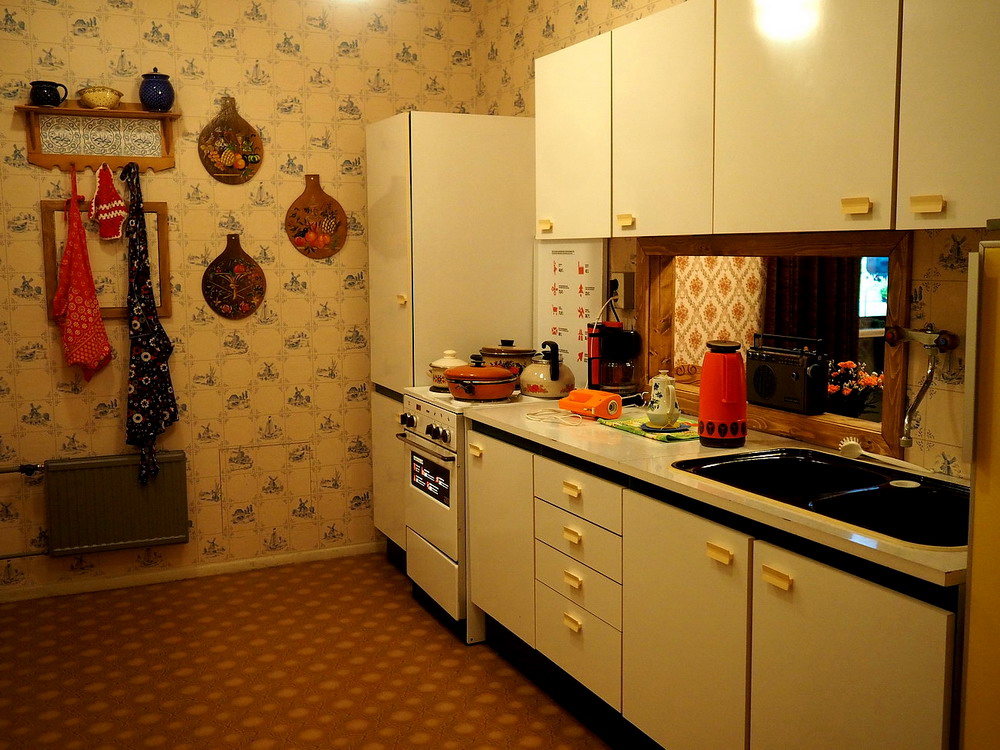
At the 10am opening, many people (mostly students) were already queuing up in front of the entrance. Life in the GDR is now a 10th grade curriculum subject, so this museum is a good location for school trips. I asked a member of staff if the majority of visitors were “Western” tourists or instead, former residents of East Berlin who come for the nostalgia. The answer surprised me: only a few visitors are people who lived through this in reality. It seems like they don’t want the museum to remind them of their old life. However, that’s not the case for children of East Berlin’s former residents, who want to know this era not exclusively from their parents’ stories.
There are other museums that also bring back happy memories of former times – for example the Trabant Museum. Among the ten vehicles on display, I happily came across the sky blue 601 S model, which marked the beginning of my travel career. My parents happened to own such a car and at weekends, I often crept in the back seat, ready to make day-trips to beautiful castles.
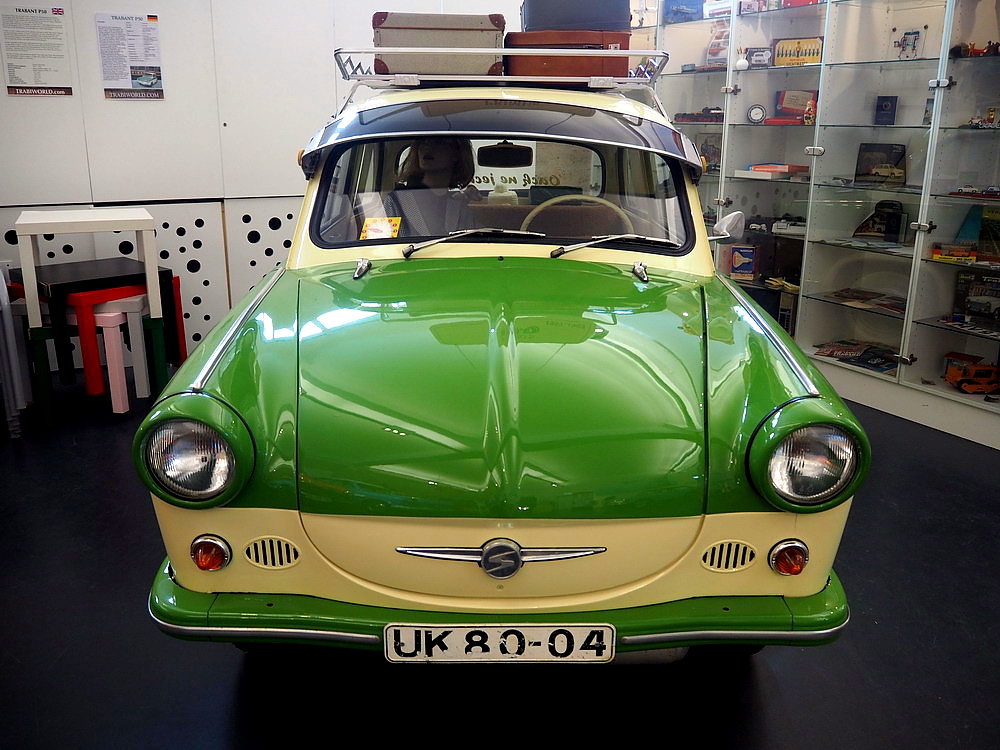
Hotels
Visitors can also find hotels and restaurants that will take you back in time. The GDR-themed Ostel Hostel Berlin is an easy five-minute walk away from Ostbahnhof, in an old block of flats. The block itself must have been grey once, but today it stands in vibrant colours.
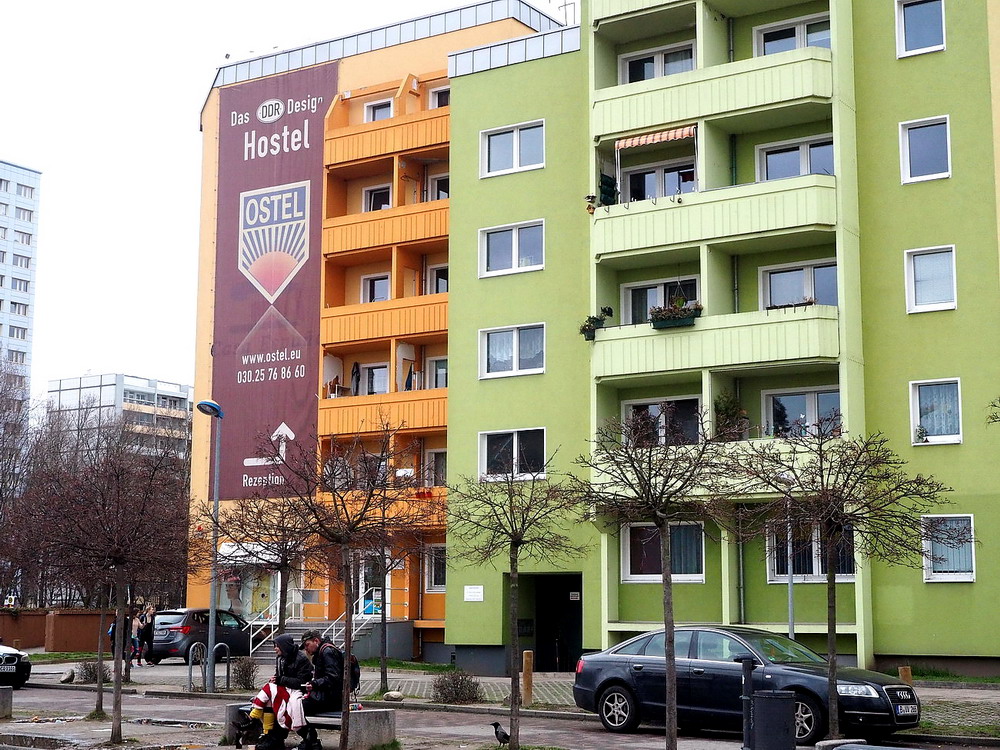
The furniture of Ostel is totally retro, from tables to the mini radios. The rooms lack a TV-set and there are also shared bathrooms. Wandering around Reception, a by now rather rare sign saying “Cash Only” caught my eye – it seems that they too recall the past.
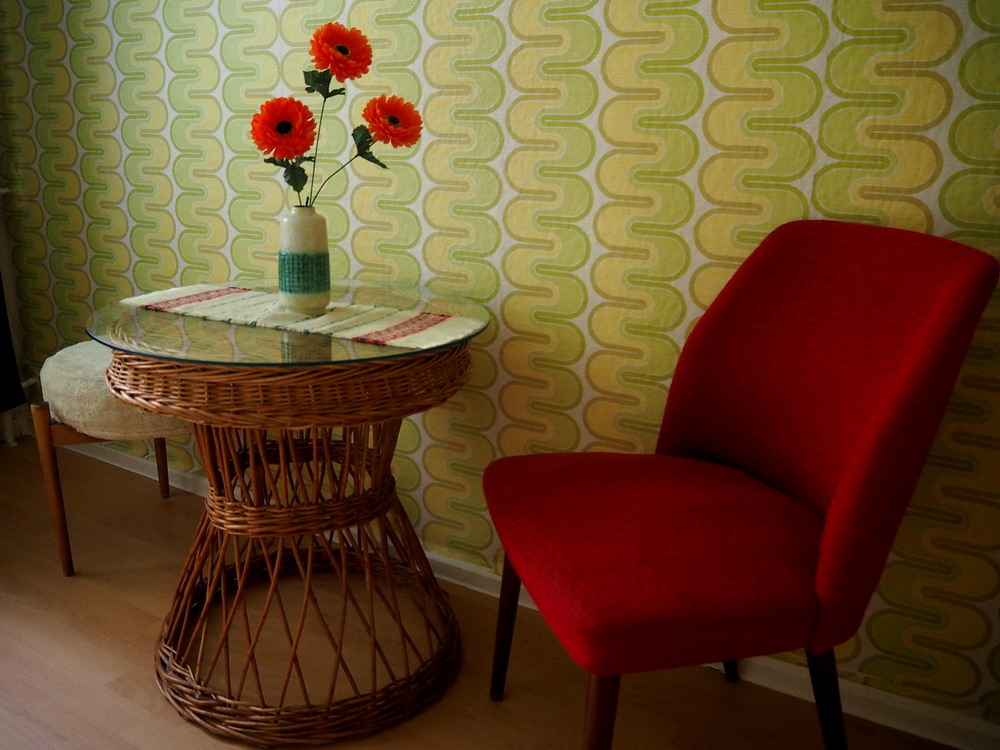
Restaurants
You can also find the tastes of the GDR in restaurants. Osseria is a bit further from the centre, but with the excellent tram line I got here easily.
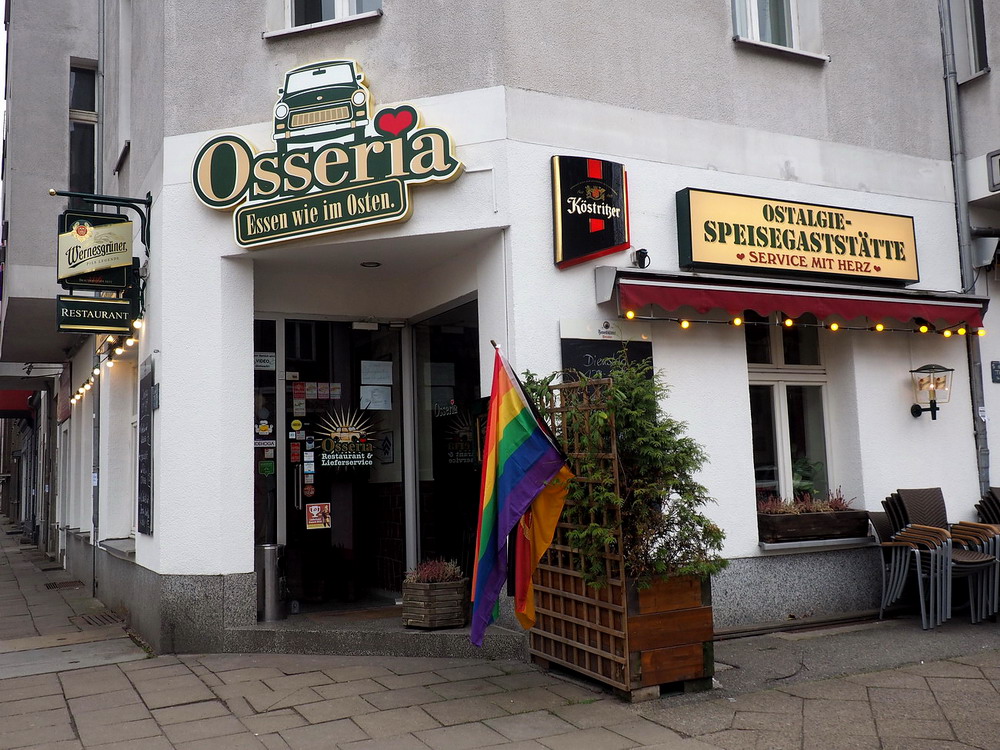
While I waited for lunch, I examined everything up close – from their matchbox collection through retro soaps to the record covers on the wall. What a treasure! I ordered a lunch menu and I have to admit the dry Wiener Schnitzel was terrible with the awful brown sauce, but I guess it was authentic!
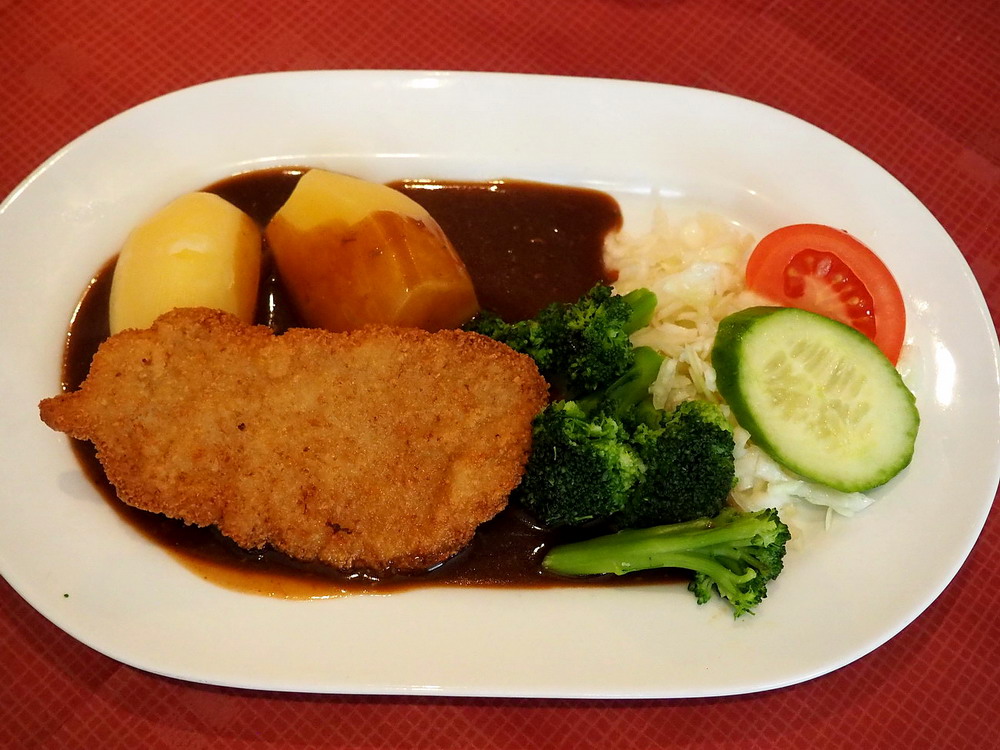
The GDR experience was only broken by the waiter, who was “too nice”, because half an hour after closing time she still let me in. During lunch time, the restaurant is open from 12pm to 3pm and I arrived at 3:30pm. A true miracle that they were not closed with locks! Apart from myself, there were two elderly ladies still chatting by a table. They were probably gossiping so much, they got stuck there after lunch.
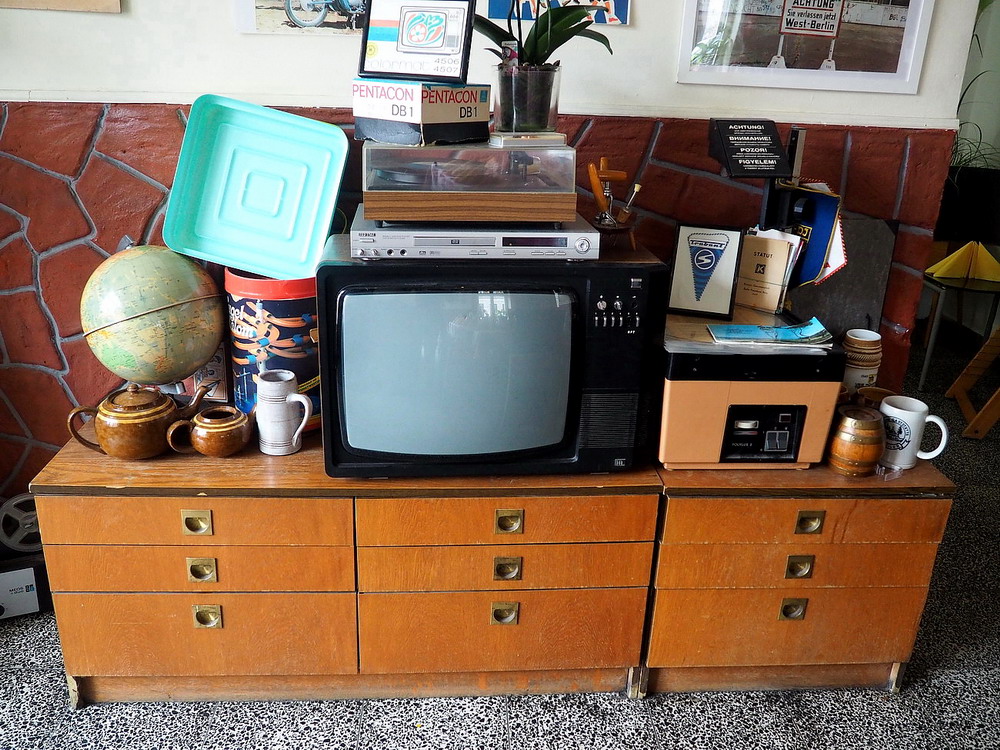
My GDR-themed trip finished with this lunch. The way I see it, besides the museums introducing the wall and the history of the era, there is plenty of space for happier memories, bringing back everyday life. As a number of cafés and entertainment facilities show, the atmosphere of the Weimar Republic, together with iconic places from the past, sit easily with life in the modern city.

